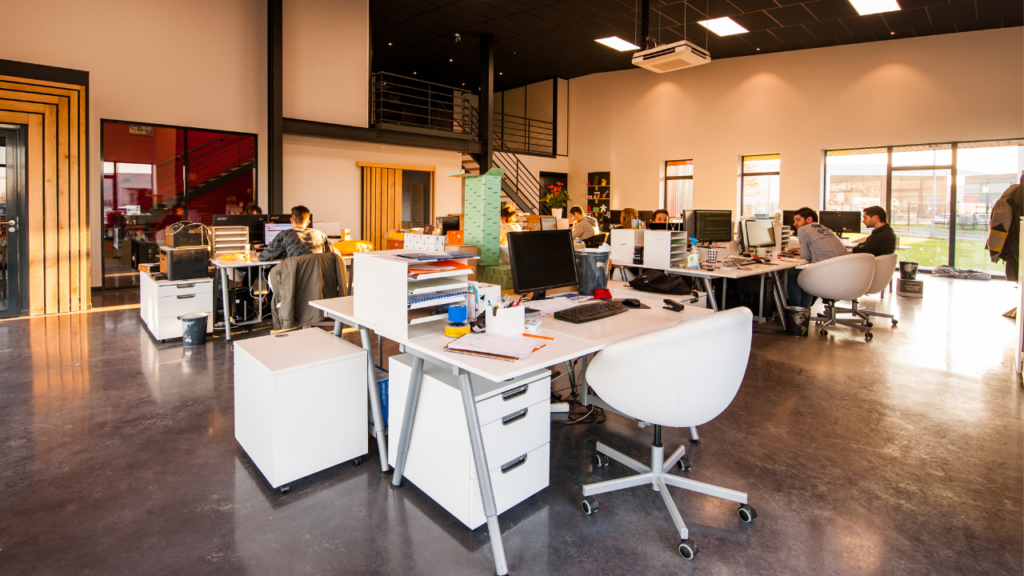
To build marketplace credibility, trust, and recognition for your personal or business brand today, you need to implement a strategic combination of marketing communications that involves, to varying degrees, content (long-form, short-form and micro format), social media, plus media and/or influencer relations.
This combination will change, of course, depending on your circumstances and your goals. And, in many cases, if you want to turbo-charge your efforts, you will probably need to incorporate some element of paid media activity as well, preferably once your communications ‘base’ is built.
Of course, there’s no point in having a plan unless you take action.
I’m talking less about one-off campaigns here; more so, ongoing drip-feed activity that will keep your name front of mind with your audience (clients, customers, stakeholders) as well as get people talking about you in a positive light.
In other words: continue to build your brand and reputation a way that’s credible and relevant, which of course will help pave the way for commercial opportunities, effectively acting as a forerunner to your harder edged promotional activity.
There are three ways of achieving this, as I see it:
- You do everything yourself (DIY) – keep both strategy and execution in-house
- Done for you (DFY) – you outsource much of it by engaging an agency, or a collective of specialist freelancers
- DIY/GAS model – you do it yourself but engage a coach or mentor to provide personalised guidance, accountability and support (GAS), with the option of engaging independent contractors as required.
Let’s unpack each of these three options …
You do everything yourself (DIY model):
BENEFITS —
- Ability to create a sustainable culture of content internally.
- Greater control that comes with being totally hands-on.
- Communications potentially are more authentic because they are anchored in a deeper understanding of the business, its customers and its partners.
- More focus on the bigger picture, which helps greatly when it comes to integrating the various elements involved in a content-led, multi-pronged marketing communications program
- Be able to see opportunities more quickly and incisively (because you’re ‘on the ground’), and thus be able to capitalise accordingly.

DOWNSIDES —
- For solopreneurs and smaller operations, lack of time and resources is always going to be an issue; lack of strategic (and tactical) content and communications experience potentially will hinder progress as well.
- For large businesses, if the head of communications is not current in their thinking, and/or perhaps they struggle to find the time and space to develop a cohesive strategic plan – then the result will speak for itself: potentially, any content-driven activity will be piecemeal and/or reactive and/or uninspiring (‘by the numbers’) and/or not focused or purposeful.
- A lack of the right internal resources – i.e. the number of people involved, with a sufficient level of expertise and experience – potentially will throw your program off kilter and maybe hamper the results, even if the will and endeavour are apparent.
MY THOUGHTS —
For personal brand-based enterprises/small businesses – I’m all for entrepreneurs and thought leaders going it alone, learning the skills necessary to make an impact with their content and brand communications, and becoming their own media channel.
Taking action is the critical thing here; you’d be surprised at what you can do yourself if you take things seriously, invest aside the time required, and then take action. I recognise that time can be an issue here, but when you see it done well, the DIY route can often be a very effective and sustainable way to grow your brand and your business.
Large businesses and organisations should be able to go down this route by assembling the required resources in-house.
The key is to ensure (a) they have the necessary strategic ‘chops’ to set the tone and direction in the first place, and (b) they recruit people with the right experience, attitude and skill-sets needed to execute at scale.
Also worth noting, a ‘hub-and-spoke’ model can work well here i.e. create a solid team in-house, and then bring in hands-on freelance resources as required (you could also outsource elements of strategic planning as well, if needed).
Done-for-you model (DFY):
Handing everything off to an external agency can be a very appealing proposition, and it can work an absolute treat if you get things right. This will likely require a few things to fall into place.

For example: a mutually positive and respectful relationship between the key players; a fair value exchange (i.e. the value of the work delivered is congruent with the level of fees charged); little movement of personnel (on both sides); a client that likes being challenged (this requires having the right mindset), and senior agency personnel who are happy to do the challenging; plus, those working on the agency side need to be avid learners who set aside time to explore new ideas, delve into case studies of brands that have done things well, and who place equal emphasis on both strategy and tactical implementation.
BENEFITS —
- Relentless execution: a dedicated team that that will not only challenge you and your people, but also help keep the program purring ‘around the clock’
- Ability to call upon the different/specialist skillsets that might be needed (and that you don’t have in-house) – the days of generalists being able to do everything are well and truly over!
- Greater flexibility, and an ability to dial up or down as required, in line with changes in budget.
DOWNSIDES —
- For solopreneurs and smaller operations, cost is going to be the big consideration here.
- For large businesses, if you don’t get the culture fit right with your agency (and with it, all the good stuff that stems from that), then you might find it a hard slog.
MY THOUGHTS —
Engaging the right agency can really crank your content-led communications efforts.
The key is to ensure you do your homework. Cultural fit is critical, as is depth of resources (many agencies try to appear bigger than they are; they pretend they have a lot of resources in-house, when they really don’t).
You need to allow time, as well as put in the effort, to build a harmonious partnership, but watch out for ‘red flags’ early in the arrangement i.e.
- Slow follow-through on promises.
- Underwhelming quality of work.
- Emphasis on tactical execution, but strategically off-kilter.
- Switching of personnel on the account (‘bait-and-switch’).
Also worth noting: agencies can sometimes get stale with long-term retainer accounts; it’s up to both sides to challenge one another to keep things fresh in terms of ideas and opportunities.
An alternative to a traditional full-service agency (if you can’t find the right one for you) is to consider a senior communications ‘gun’ who runs their own consulting business, but keeps things lean, preferring to rely on a tight collective of hand-picked seasoned operators who can be brought onboard for specific assignments when needed.
I’ve run both agencies and collectives – both models can work well, but again, it will all come down to cultural fit, and mutual respect between both parties.
Of course, you can also have a combination DIY/DFY, where you handle some things in-house, and then outsource those elements where you don’t have the time or resources available. This is the ‘hub-and-spoke’ model referred to above, and it can work very well if all the key elements are in place.
Which leads us to ….
DIY/GAS model:
With this model, the business owner executes the marketing communications program (DIY), but engages a coach or mentor to provide personalised guidance, accountability and support (GAS).

From what I can see, this model is pretty under-utilised; this is probably because (a) there are not a lot of experienced content and communications guides or mentors available for such a service (versus consultants, who are focused on execution), and if there are, (b) business owners and heads of comms are probably not aware that such a model exists.
[ For context, this is my model of operation for my business ]
NOTE – a variation might be: the business owner or head of marketing or communications brings in the coach to mentor and guide a young and inexperienced (marketing or social/content) team. I’ve done this a few times, and it can really work for the business: (a) the content and communications stays on track strategically, (b) team members receive regular guidance and support, and continue to learn new things, while (b) the business owner, or senior executive, is freed up to concentrate on other areas of the business.
BENEFITS —
- All the benefits outlined above for the DIY model, plus …
- You get access to many years’ worth of in-the-trenches wisdom and experience from your coach/mentor, as he or she not only guides you along the journey – from strategy through to creative development, and tactical execution – but also keeps you accountable as well.
- Depending on the coach or mentor, you might also get access to their ‘little black book’ of contacts to source savvy specialists who can help you with specific elements of your marketing and communications (not to mention, their advice re the many and varied tools and tech platforms available that can help you achieve more, with less).
- And let’s not forget, a key part of this arrangement is knowledge transfer (as opposed to the agency model, where work is done on your behalf, and client education tends not to be a priority); a good guide and mentor will also teach!
DOWNSIDES —
- Similar, but somewhat alleviated: an investment in a coach/mentor can save you heaps of time and money in the long run by getting you focused and providing you with a pathway forward, not to mention creative ideas that hopefully will set you apart from the pack
- If the business owner (or head of communications) does not have the right mindset, is not willing to let go and embrace being coached and challenged, then this arrangement will have a short shelf life. Bottom line: everyone needs to be on the one page, and a willing participant.
As you can see, there are quite a few ways to go when it comes to getting your content-led communications program up and firing on all cylinders.
The thing is: what’s going to be right for you, your brand and your business?
Today, we have many options to get stuff done, but it helps to understand the lay of the land first and the various pathways you can take. The key is to be open to new thinking and ideas, and then pull the trigger!
👇
If you’d like to better understand how the DIY/GAS model might work for you and your business, please reach out to me here OR send me a DM via LinkedIn OR book a Zoom 15-minute (or 30 mins) Zoom call, no obligation whatsoever 🙂



Leave a Reply